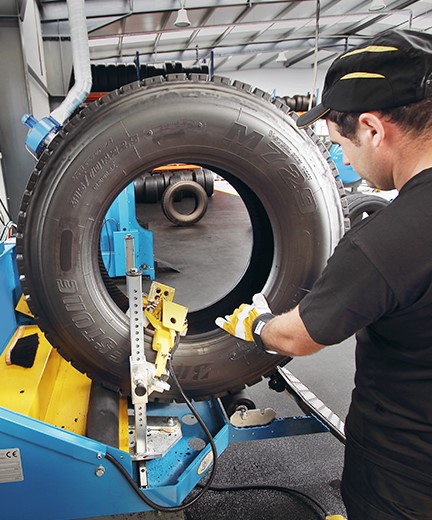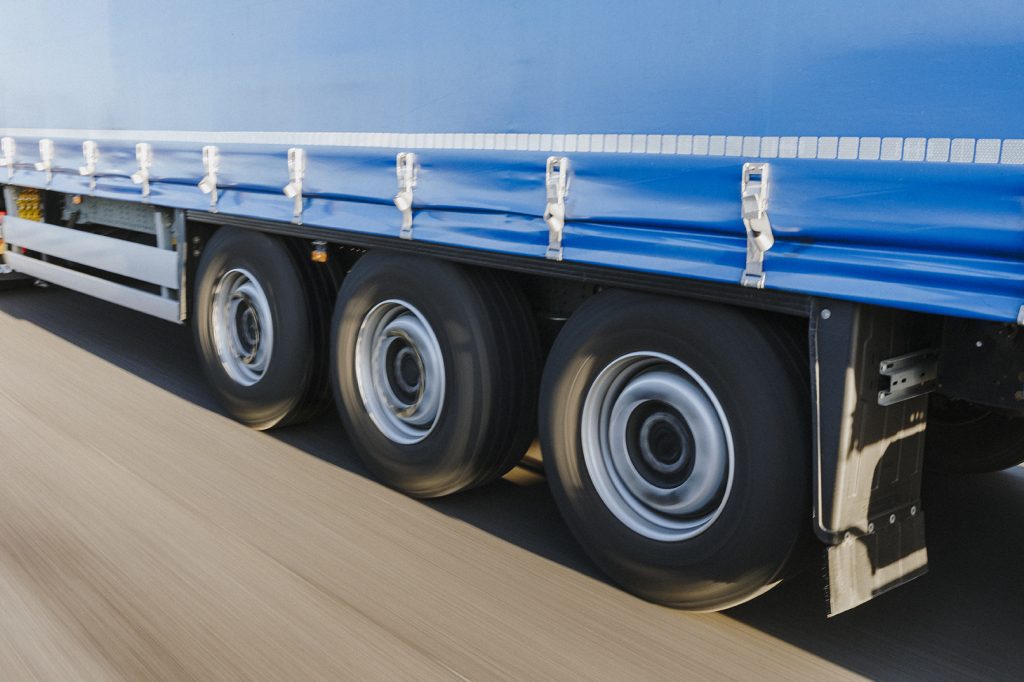If you’re reading this article, you’re probably interested in learning about tyre retreading. Maybe you’re considering it for your fleet and want to find out more. We’re going to answer questions about what it is, the retreading process, its benefits and who we recommend as a retreading partner.
Tyre retreading: your questions answered
What does tyre retreading mean?
Retreading is a remanufacturing process for used tyres. It replaces the tread that has worn away, bringing tyres back to a similar performance level and extending their life.
What happens in the tyre retreading process?
The retreading process begins with a thorough inspection. A highly-trained specialist conducts the initial visual and hands-on inspection to find and register all defects. This is followed by an electronic inspection and a shearography test to discover any damage that may not be visible to the naked eye.
Buffing removes old tread rubber to make the casing surface clean and smooth. Skiving then trims back any damaged or rusted steel cords to solid material, ensuring the tyre is ready for the main repair work. The specialist removes any damaged materials that remain and restores the tyre casing.

An uncured bonding layer of rubber is used to coat the tyre surface before meticulously applying a new tread to it. The assembled tyre is wrapped in an air-tight envelope and brought into a pressure chamber, which causes the bonding layer to cure and permanently adhere the new tread to the casing. A retread expert gives the rebuilt tyre a final inspection to ensure it meets quality standards.
Is tyre retreading safe for my vehicles?
Retreading is a thorough process with strict quality standards, ensuring retreads are a safe and reliable alternative to replacing your tyres. In fact, manufacturers now make tyres with the expectation that they can be retreaded in the future.
What are the benefits of retreading your tyres?
Let’s face it: replacing your tyres with completely new ones can be expensive. Retreading is a more cost-effective way to bring your tyres back to a high standard of quality. And compared to new tyres, retreads have a significantly lower cost per kilometre.
Another big reason to choose retreading is for its environmental benefits. Retreads reduce the amount of raw material used. There’s also significantly less CO2 emitted during the manufacturing process, making it a more sustainable option.

Why choose Bandag as your retreading partner?
Part of Bridgestone, a global leader in tyres and rubber providing solutions for safe and sustainable mobility, Bandag is a global leader in retreading solutions. It has over 60 years of experience in the industry. and is committed to quality, safety and sustainability.
Bandag has an extensive network of franchisees in over 90 locations across Europe. They work with state-of-the-art equipment and strict quality standards to produce high-performing retreads that fleet managers can rely on.
Bandag retreads also help fleets reduce their carbon footprint. Here are some key stats:
- Only 1/3 of raw materials used1
- Up to 70% less oil needed1
- 14kg less steel per tyre needed2
- Up to 80% less carbon emissions1
Not only does Bandag deliver a reliable, sustainable solution, they also help you save money. Bandag tyres cut the total cost per kilometre by an average of 30%3 compared to new tyres.
1 Compared to new tyres. Source BIPAVER. Per tyre, for size 315/80R22.5.
2 Per tyre, for size 315/80R22.5
3 Based on internal field evaluation and tests conducted with Bridgestone’s research and development facilities











